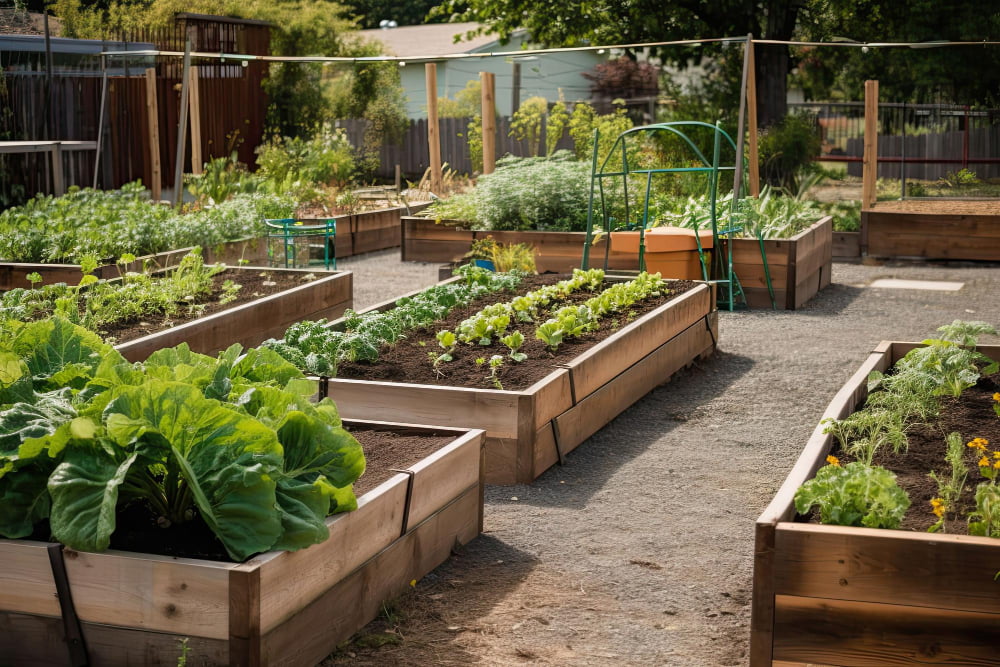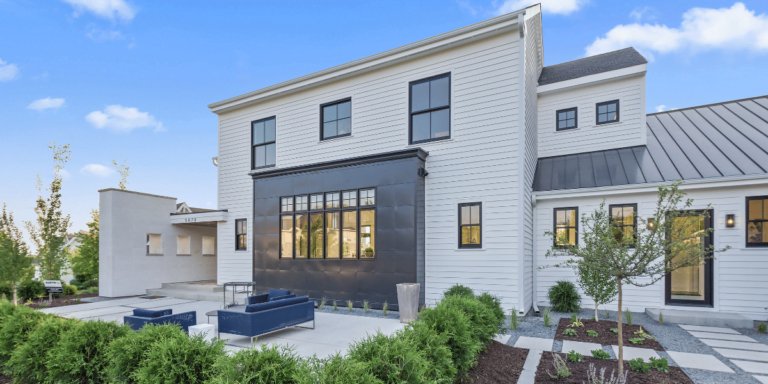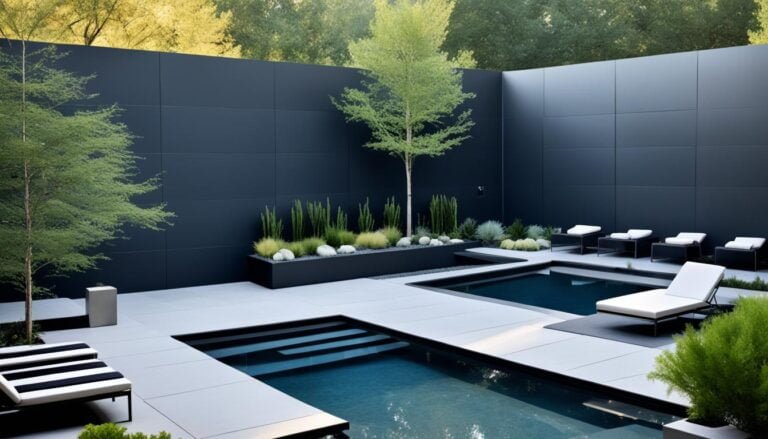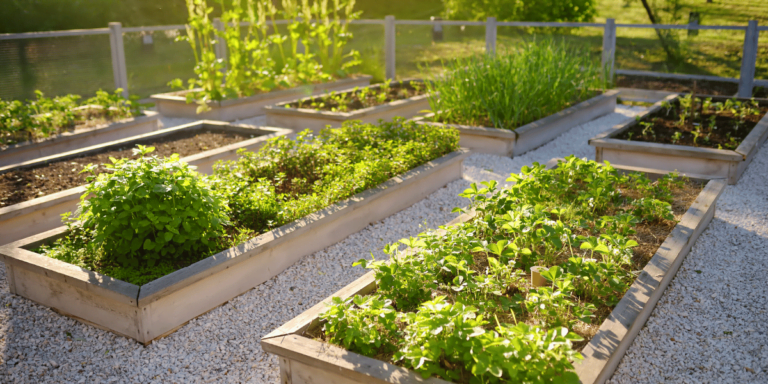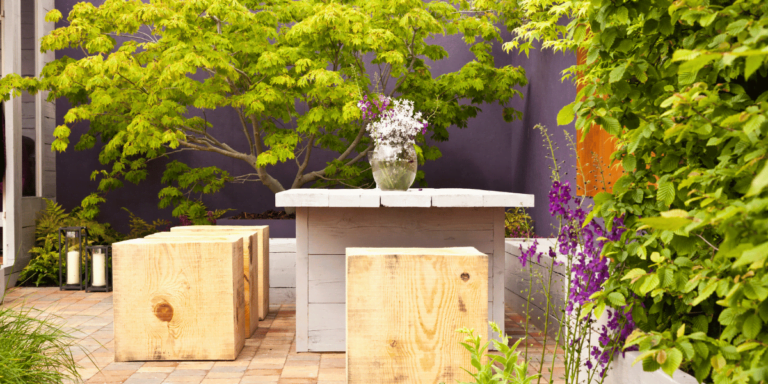Welcome to our guide on space-saving techniques for the aspiring urban gardener! In today’s fast-paced urban environment, finding ways to reconnect with nature and create a sustainable living space is more important than ever. Urban gardening offers a solution that allows you to transform even the smallest of spaces into thriving green oases.
With our expert tips and creative ideas, you’ll discover how to maximize space, overcome limitations, and design an eco-friendly landscape that not only enhances your surroundings but also promotes sustainable urban gardening.
Key Takeaways:
- Discover garden space saving ideas techniques for urban environments.
- Learn how sustainable urban gardening benefits mental and physical well-being.
- Explore eco-friendly landscape design ideas for creating beautiful urban gardens.
- Understand the challenges and solutions associated with urban gardening.
- Find out which tools are essential for successful urban gardening.
Why Urban Gardening is Gaining Popularity
Urban gardening has witnessed a surge in popularity as more people recognize its numerous benefits. This form of gardening has a positive impact on various aspects of urban life, including mental and physical well-being, air quality improvement, local food production, community building, biodiversity, education, temperature regulation, and aesthetic appeal.
The practice of urban gardening provides a myriad of advantages for individuals living in cities. Engaging in gardening activities can significantly improve mental and physical well-being. It serves as a therapeutic outlet, offering stress relief and contributing to overall happiness and life satisfaction.
Air quality improvement is another major benefit of urban gardening. Plants act as natural filters, absorbing carbon dioxide and releasing oxygen while removing harmful pollutants and improving air quality in urban areas. This can have a substantial positive impact on the health and well-being of city dwellers.
By encouraging local food production, urban gardening helps reduce reliance on industrial agriculture and supports sustainable agricultural practices. It enables individuals to grow their own fresh and organic produce, promoting healthier eating habits and reducing the carbon footprint associated with transporting food over long distances.
In addition to personal benefits, urban gardening plays a crucial role in community building. It fosters social interactions and creates spaces for shared experiences and collective efforts. Gardens become a platform for organizing workshops, educational programs, and community events that bring people together and strengthen community bonds.
Urban gardens also contribute to biodiversity conservation in urban environments. They provide vital habitats for birds, insects, and other wildlife, thus enhancing the overall ecological balance and promoting the coexistence of diverse species within urban areas.
Educational opportunities are abundant in urban gardens. They serve as outdoor classrooms, enabling individuals of all ages to learn about botany, sustainable gardening practices, and the importance of environmental stewardship. These educational experiences foster a sense of environmental responsibility and encourage sustainable living practices.
Temperature regulation is another crucial aspect where urban gardening plays a significant role. Vegetation helps cool urban areas by providing shade and reducing the heat island effect caused by concrete and asphalt structures. This contributes to a more comfortable and livable urban environment.
Finally, the aesthetic appeal of urban gardens cannot be overlooked. They bring beauty and vibrancy to otherwise concrete-dominated landscapes, making cities more visually appealing and inviting. Urban gardens serve as oasis-like retreats amidst the hustle and bustle of urban life, providing moments of tranquility and natural beauty.
| Benefits of Urban Gardening | Keywords |
|---|---|
| Mental and Physical Well-being | Urban Gardening |
| Air Quality Improvement | Urban Gardening, Local Food Production |
| Local Food Production | Community Building |
| Community Building | Biodiversity |
| Biodiversity | Education |
| Education | Temperature Regulation |
| Temperature Regulation | Aesthetic Appeal |
As urban gardening continues to gain popularity, more people are recognizing its transformative effects on their lives and the cities they call home. With its countless benefits, this green movement is poised to shape the future of urban landscapes, promoting sustainability, well-being, and a stronger sense of community.
Types of Urban garden space saving ideas
Urban gardens come in various types to suit different urban settings and constraints. Each type of garden offers unique advantages and can be tailored to meet specific needs and preferences.
Container Gardening
Container gardening is a versatile and popular choice for urban gardeners with limited space. It involves growing plants in containers such as pots, planters, or even repurposed objects like buckets or crates. Container gardens can be placed on balconies, patios, window sills, or even indoors, allowing urban dwellers to enjoy the beauty and benefits of gardening in small areas. This type of gardening is particularly ideal for growing herbs, flowers, and small vegetables.
Rooftop Gardens
Rooftop gardens utilize unused rooftops as green spaces. They provide urban residents with the opportunity to create lush gardens in the sky while making productive use of space that would otherwise go unused. Rooftop gardens can be designed in various styles, from traditional vegetable gardens to landscaped green spaces with trees, flowers, and seating areas. They contribute to improved air quality, reduce the urban heat island effect, and offer relaxing sanctuaries in densely populated areas.
Vertical Gardens
Vertical gardens provide a creative solution for maximizing space in urban environments. As the name suggests, they make use of vertical surfaces such as walls, fences, and trellises. By growing plants vertically, urban gardeners can add greenery to areas that have limited floor space. This type of gardening is highly versatile and can be implemented indoors or outdoors. Vertical gardens not only enhance the aesthetic appeal of urban spaces but also provide opportunities for growing a wide range of plants, including edible ones.
Community Gardens
Community gardens are collaborative projects where individuals come together to cultivate a shared green space. These gardens promote community bonding, encourage sustainable food production, and foster a sense of ownership and pride in the neighborhood. Community gardens are typically divided into individual plots that community members can lease or maintain collectively. They provide an opportunity for urban residents to grow their own vegetables, herbs, and flowers while creating social connections and promoting a healthier, more sustainable lifestyle.
Window Farms
Window farms are a unique type of urban gardening that combines hydroponics and vertical gardening. They are designed to utilize natural sunlight by being positioned near windows. Window farms typically consist of vertically stacked containers or shelves where plants are grown hydroponically, meaning they receive nutrients through a water-based system rather than traditional soil. They offer a space-saving solution for urban gardeners with limited floor space. Window farms are popular for growing herbs, leafy greens, and smaller vegetables.
Raised Bed Gardens
Raised bed gardens are perfect for urban areas with poor soil quality or limited ground space. These gardens consist of planting beds that are elevated above the ground level. Raised beds can be built using various materials such as wood, bricks, or composite materials. They provide better control over soil conditions, promote good drainage, and allow for easier gardening practices. Raised bed gardens are suitable for growing a wide range of plants, from flowers and vegetables to herbs and small fruits.
Each type of urban garden offers its own unique benefits and challenges. The choice of which type to pursue depends on factors such as available space, the desired plants, and personal preferences. Combining different types of urban gardens can bring diversity and richness to the urban landscape, creating beautiful green spaces that contribute to the overall well-being of city dwellers.
The Challenges and Solutions of Urban Gardening
Urban gardening presents unique challenges that can make it seem daunting for aspiring gardeners. Limited space, poor soil quality, inadequate sunlight, water restrictions, pests and diseases, zoning restrictions, and financial constraints can all hinder the success of an urban garden. However, with innovative solutions and a little creativity, these challenges can be overcome.
Maximizing Limited Space
One of the most common challenges in urban gardening is dealing with limited space. Fortunately, there are several approaches to make the most of the available space:
- Vertical gardening: Growing plants upwards on walls, trellises, or vertical structures maximizes space utilization.
- Container gardening: Using containers of various sizes, such as pots, hanging baskets, and window boxes, allows for gardening in small areas.
By employing these techniques, urban gardeners can grow a wide variety of plants even with limited space.
Overcoming Poor Quality Soil
Urban areas often have poor quality soil due to construction, pollution, or other factors. However, there are solutions to bypass the limitations of poor soil:
- Raised bed gardens: Constructing raised beds and filling them with high-quality soil provides a fertile growing environment.
- Container gardening: Using containers with nutrient-rich soil allows plants to thrive without relying on the existing soil.
These methods ensure that plants receive the necessary nutrients despite the challenges of poor soil quality.
Dealing with Inadequate Sunlight
Insufficient sunlight is a common issue in densely populated urban areas with tall buildings and shaded spaces. However, there are ways to work around this challenge:
- Choose shade-tolerant plants: Opt for plant varieties that thrive in partial shade or low light conditions.
- Utilize artificial lighting: Using grow lights or hydroponic systems can provide the necessary light for plants to grow indoors.
These solutions ensure that plants receive the required light for healthy growth, even in areas with limited sunlight.
Addressing Water Restrictions
Water restrictions are often imposed in urban areas due to limited water availability. To overcome this challenge, water-efficient techniques can be employed:
- Drip irrigation systems: Installing drip irrigation systems minimizes water wastage by delivering water directly to the plant roots.
- Self-watering containers: Utilizing self-watering containers reduces the frequency of watering, maximizing water efficiency.
- Drought-tolerant plants: Choosing plants that are naturally adapted to dry conditions requires less water for survival.
These strategies help urban gardeners conserve water while keeping their plants healthy and thriving.
Managing Pests and Diseases
Urban gardens are susceptible to pests and diseases that can damage plants. However, there are natural and preventative measures to minimize the impact:
- Regular garden hygiene: Keeping the garden clean and free from debris helps eliminate potential breeding grounds for pests.
- Natural predators: Attracting beneficial insects and birds that prey on garden pests can help control their population.
- Companion planting: Planting certain species together can deter pests and help prevent the spread of diseases.
By implementing these strategies, urban gardeners can reduce the risk of pest infestations and keep their plants healthy.
Navigating Zoning Restrictions and Financial Constraints
Zoning restrictions and financial constraints can pose challenges for urban gardeners. However, there are practical solutions to overcome these obstacles:
- Check local regulations: Research and comply with local zoning regulations to ensure compliance with urban gardening practices.
- Start small: Begin with a small garden space to manage costs and resources effectively.
- Utilize resource-saving techniques: Implementing composting, rainwater harvesting, and recycling practices reduces the need for expensive inputs.
By understanding and working within the limitations, urban gardeners can create thriving gardens while adhering to local regulations and managing financial constraints.
Urban gardening may have its challenges, but with determination and creative problem-solving, aspiring gardeners can transform limited spaces into flourishing green oases. By embracing innovative solutions, urban gardening can thrive, bringing the beauty and benefits of nature to even the most constrained urban environments.
| Challenges | Solutions |
|---|---|
| Limited Space | Vertical gardening, container gardening |
| Poor Quality Soil | Raised bed gardens, container gardening |
| Inadequate Sunlight | Choose shade-tolerant plants, utilize grow lights |
| Water Restrictions | Drip irrigation systems, self-watering containers, drought-tolerant plants |
| Pests and Diseases | Regular garden hygiene, natural predators, companion planting |
| Zoning Restrictions | Check local regulations, start small, utilize resource-saving techniques |
| Financial Constraints | Check local regulations, start small, utilize resource-saving techniques |
Key Tools for the Urban Gardener
When it comes to urban gardening, having the right tools can make all the difference in creating a successful and thriving garden in limited spaces. Here are some essential tools every urban gardener should have:
Containers
Containers are a key tool for maximizing space in urban gardens. Terracotta pots and self-watering planters are popular choices as they are not only functional but also add a touch of charm to any garden. They come in various sizes and styles, allowing you to create a customized and aesthetically pleasing garden.
Compact Gardening Tools
In urban settings, space is often limited, so it’s important to have compact gardening tools that are easy to maneuver. Hand trowels, pruners, and small rakes are ideal for urban gardens where every inch counts. Look for lightweight and quality tools that will make gardening a breeze.
Watering Can with a Long Spout
Precise watering is crucial for maintaining healthy plants, especially in urban settings where water restrictions may be in place. A watering can with a long spout allows you to reach plants nestled in containers and hanging baskets, ensuring that water reaches the roots without splashing onto foliage.
Compost Bin
Composting is essential for creating nutrient-rich soil in any garden, and urban gardening is no exception. A compost bin provides a convenient way to recycle kitchen scraps and yard waste, turning them into valuable compost for your plants. Opt for a compact and odor-free bin that fits well in small spaces.
Vertical Gardening Supplies
In urban gardens, vertical space often goes unused. Vertical gardening supplies, such as planters and trellises, allow you to take advantage of walls, fences, and balconies, adding a vertical element to your garden. This not only saves space but also adds visual interest and allows for more plant varieties.
Grow Lights
Urban areas may have buildings or trees that block the sunlight needed for plant growth. In such cases, grow lights can be a game-changer. These artificial light sources provide plants with the necessary light spectrum for photosynthesis, ensuring healthy growth even in areas with limited sunlight.
By having these key tools at your disposal, you’ll be well-equipped to tackle the challenges and make the most of your urban garden.
Designing an Urban Garden: Expert Tips
When it comes to designing an urban garden, there are several factors to consider to create a functional and visually appealing space. Understanding the conditions and limitations of your garden is crucial to ensure the success of your garden design. Consider the following expert tips to help you make the most of your urban garden:
1. Assess the Conditions and Limitations
Start by assessing the conditions of your urban garden, such as the amount of sunlight it receives, the quality of the soil, and the protection from wind. These factors will significantly influence the types of plants that will thrive in your garden. Additionally, consider any limitations imposed by the available space and resources.
2. Define the Functional Space
Next, determine the intended use of your urban garden. Are you planning to grow flowers, fruits and vegetables, or create an outdoor entertainment area? Defining the functional space will guide your design decisions and help you choose the right plants and features to incorporate into your garden.
3. Select Plants for All Four Seasons
One of the keys to a successful urban garden design is to choose plants that provide interest and beauty throughout all four seasons. This ensures that your garden remains visually appealing and enjoyable year-round. Consider a mix of evergreen plants, perennials, and seasonal flowers to maintain color and vibrancy throughout the year.
4. Paint with Broad Strokes
Emphasize a cohesive design approach by planting groups of high-performance plants. By focusing on bold and impactful plant combinations, you can create visual impact within your urban garden. Think about color schemes, textures, and varying heights to add depth and dimension to your garden design.
| Garden Design Tips | Benefits |
|---|---|
| Choose plants suitable for the conditions | Ensures plant success and minimizes maintenance |
| Create functional spaces for different purposes | Enhances usability and enjoyment of the garden |
| Select plants for year-round interest | Maintains visual appeal throughout all seasons |
| Design with a cohesive approach | Creates visual impact and harmony |
By considering the conditions, limitations, and advantages of your urban garden, you can create a space that is not only functional but also visually captivating. With the right plant selection and a cohesive design approach, your urban garden can become a sanctuary amidst the bustling cityscape.
Conclusion
Urban gardening offers numerous benefits and has gained popularity as a means of sustainable living. Despite the challenges of limited space, poor soil quality, inadequate sunlight, and other constraints, urban gardeners have found creative solutions to overcome these obstacles. By utilizing space-saving techniques, the right tools, and thoughtful design, urban gardeners can create lush and productive gardens in the heart of the concrete jungle. Urban gardening is not just a trend but a movement towards sustainable living, healthier lifestyles, and community cohesion.
Frequently Asked Questions
What are some space-saving techniques for urban gardening?
Some space-saving techniques for urban gardening include vertical gardening, container gardening, and raised bed gardening. These methods maximize limited space and allow for the cultivation of plants in urban areas.
Why is urban gardening gaining popularity?
Urban gardening is gaining popularity due to its numerous benefits, including improving mental and physical well-being, enhancing air quality, promoting local food production, building community bonds, creating habitats for wildlife, and educating individuals about sustainable living.
What are the different types of urban gardens?
The different types of urban gardens include container gardening, rooftop gardens, vertical gardens, community gardens, window farms, and raised bed gardens. Each type of garden is suited to different urban settings and constraints.
What are the challenges and solutions of urban gardening?
Some challenges of urban gardening include limited space, poor quality soil, inadequate sunlight, water restrictions, pests and diseases, zoning restrictions, and financial constraints. However, these challenges can be overcome with innovative solutions such as vertical gardening, raised bed gardening, and utilizing grow lights.
What are the key tools for urban gardening?
Key tools for urban gardening include containers (such as terracotta pots and self-watering planters), compact gardening tools, watering cans with long spouts, compost bins, vertical gardening supplies (such as planters and trellises), and grow lights for areas with limited sunlight.
What tips can you offer for designing an urban garden?
When designing an urban garden, consider factors such as sunlight, drainage, and protection from wind to determine appropriate plant selection. Think about the intended use of the garden and prioritize plants that provide interest and beauty throughout the four seasons. Creating visual impact through groupings of high-performance plants and emphasizing a cohesive design approach can enhance the overall aesthetic of the urban garden.
What are the benefits of urban gardening?
Urban gardening offers numerous benefits, including improving mental and physical well-being, air quality improvement, promoting local food production, building community bonds, creating habitats for wildlife, educating individuals about sustainable living, regulating temperatures in cities, and adding aesthetic appeal to outdoor spaces.



